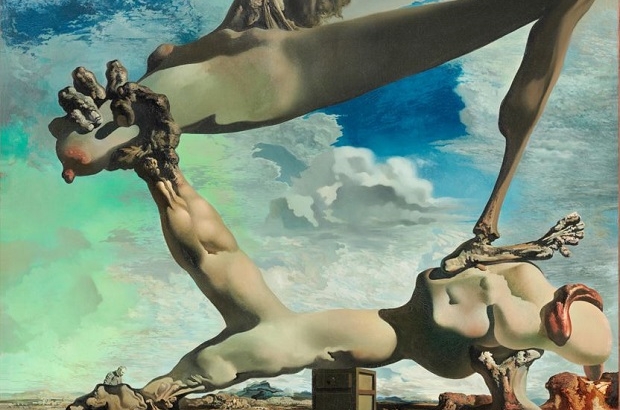- Daily & Weekly newsletters
- Buy & download The Bulletin
- Comment on our articles
‘Imagine! A Century of International Surrealism’: Exhibition showcases vibrant challenging art
The celebration of a centenary of Surrealism continues with Brussels’ Museum of Fine Arts staging a blockbuster show of more than 130 artworks.
Exploring the influential avant-garde movement from the perspective of Symbolism, Imagine! A century of international Surrealism highlights the links and the divisions between the two styles.
It’s a complementary exhibition to Bozar’s Histoire de ne pas rire that goes to the root of Surrealism in Belgium. Together, they offer a unique perspective into the art movement that continues to fascinate and reverberate today.
from 1880, the Belgian capital was an artistic hotbed with Symbolism practised by numerous artists such as Fernand Khnopff, Félicien Rops, Leon Spillaert, Jean Delville, William Degouve de Nuncques and George Minne. As a reaction to Realism and Impressionism, it delved into opposing realms of fantasy and the imagination, serving as a precursor to Surrealism that was founded in Paris in 1924.
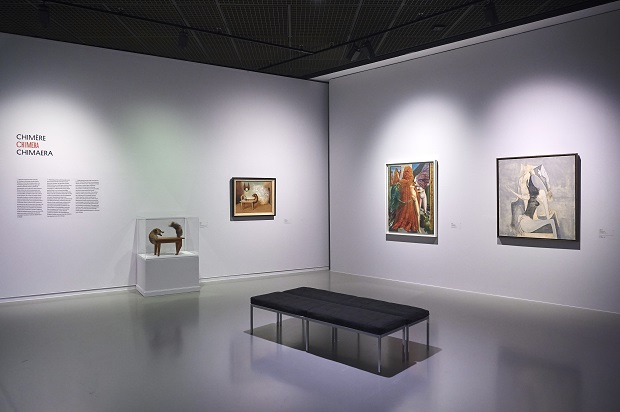
To emphasise the similarities and discordance between the two, works from each style are presented side by side in 10 poetic themes, such as Labyrinth, Mental Landscapes, Metamorphoses and Myths, Dream and Nightmare. They encompass mythology, mysticism and the subconscious; topics prevalent in Surrealist practice.
The scenography makes the connections between the artworks accessible to everyone, say organisers, recognising that aspects of Surrealism can be difficult to understand. Its spirit of protest and rebellion was an attack on conventional culture, morality and institutional life, yet was also individualistic and anarchic.
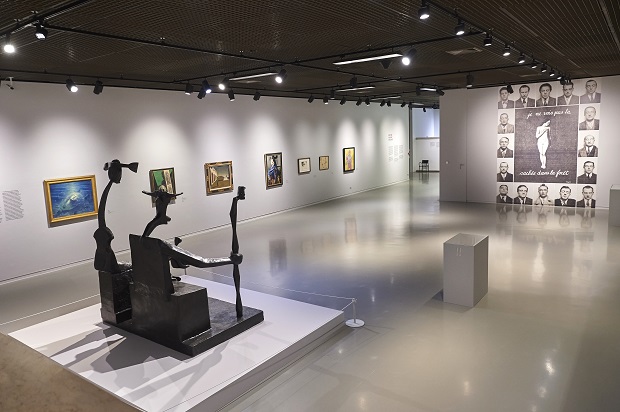
After Brussels, the itinerant show, organised in collaboration with the Pompidou Centre in Paris, will travel to four other European cities as well as Philadelphia in the US; each hosting institution invited to present works from its own collections.
For Belgium, this provides an opportunity to display some of its finer pieces, including an array of paintings by Khnopff, a recognised master of Symbolism in Europe. He employed various medium to express absence, impossible love and withdrawal via enigmatic symbols and clues. Portrait of Marguerite is an idealised rendition of the artist’s sister and muse, infused with an air of a mysterious woman, one of his preferred themes.
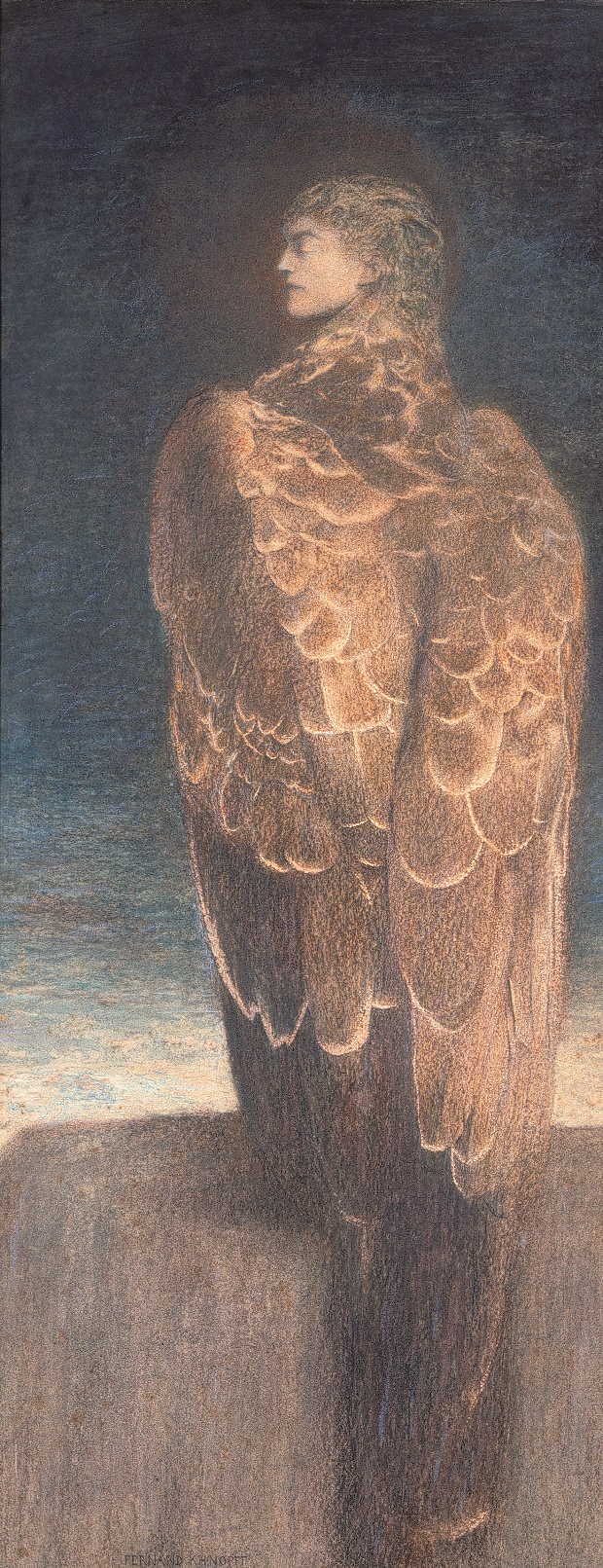
Mystery also pervades his 1909 Sleeping Medusa (pictured above), with Khnopff exploring new artistic directions. In the pastel and charcoal work, a woman’s head, her eyes closed, sits atop the plumed body of a bird. It’s a stark lonely image inspired by British Pre-Raphaelite Edward Burne-Jones.
Khnopff was himself an inspiration for Magritte. The Surrealist master is represented in Empire of Light – with its confused paradox of sunlight and clouds versus obscurity, originating from the museum’s collection, as well as The Acrobat’s Ideas (pictured below), showing the convoluted contortions required by the gymnast.
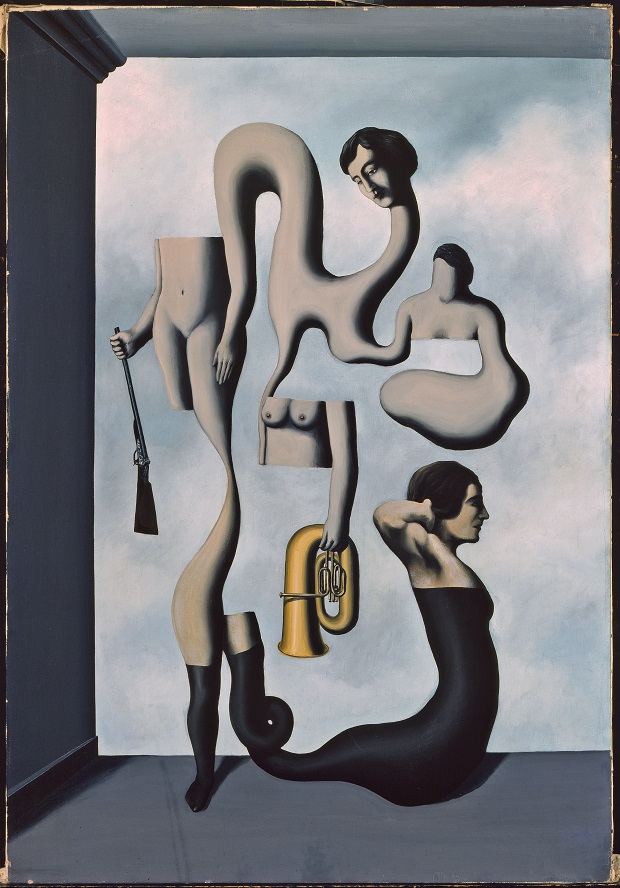
Another artist represented in a number of categories is the prolific and experimental Max Ernst. His invention of ‘frottage’ and ‘grattage’ techniques – taking rubbings from textured surfaces – created ‘automatic’ images that were the foundation of Surrealism in France.
Another technique, decalcomania – involving spreading diluted paint – was employed in his 1940 Attirement of the Bride, an intriguing foray into illusionistic Surrealism with its unsettling bird-like creature. This was an important symbol for the ingenious artist, who assumed an alter ego ‘Loplop, Superior of the Birds’ in 1929. It was also a pivotal work in Ernst’s career as he left for America in 1941 after being interred in France as an enemy alien.
War and its atrocities along with the rise of fascism were reflected in the work of many of these artists. Salvador Dali’s 1936 Soft Construction with Boiled Beans, subtitled Premonition of Civil War (pictured, main image), is one of the Spaniard’s strongest political statements; the violent sexualised image was painted six months before the Spanish civil war. The threat of the rise of fascism is also portrayed in The Fireside Angel (The Triumph of Surrealism), a 1937 oeuvre by Ernst.

Alongside these illustrious as well as lesser-known names, are 17 women artists, representing one third of the total artists on display. Their integral role in the Surrealist movement is finally elevated beyond that of wife, model, muse… with Dorothea Tanning one outstanding example. The American was married to Ernst and from 1946 they lived and worked in the desert setting of Sedona, Arizona. The Guest Room (pictured) is a gothic horror of a painting, a morally shadowy erotic work with the figure of death standing in the background.
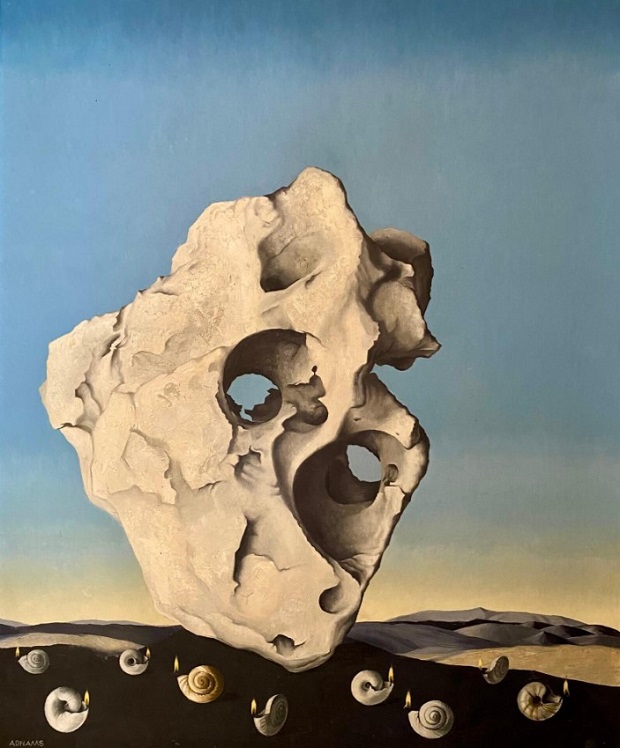
British Surrealist artist Marion Adnams created distinctive dream-like visions, often filled with stones, shell and other objects she found. A Candle of Understanding in Thine Heart (pictured) was inspired by such a stone that disturbingly bore cavities resembling eyes. It’s surrounded by snail shells transformed into miniature lamps.
In the final space, Cosmos, an oil painting by American abstract impressionist Jackson Pollock (The Moon-Woman Cuts the Circle) makes a surprise appearance as a testament to the influence of artists such as Ernst who emigrated to the country during the war. The show deliberately closes with this latter artist’s Birth of a Galaxy, painted in the year of the first lunar landing in 1969. It’s a poetic and mystical vision of man’s yearning to explore other worlds, yet retaining a touch of irony in its use of techniques practiced by native Americans.
While honouring the pioneers of Surrealism, Imagine is careful to also showcase the work of lesser-known artists who contributed to the movement’s vision. The latter’s commitment to freedom and imagination reflect values that have lost nothing of their relevance today.
The complementary exhibition, Histoire de ne pas rire is showing at Bozar in Brussels until 16 June, with a duo ticket providing access to both shows.
Imagine! A century of international Surrealism
Until 21 July
Fine Arts Museum
Rue de la Régence 3
Brussels
Photos: (main image) Salvador Dali, Soft Construction with Boiled Beans (Premonition of Civil War) ©Philadelphia Museum of Art, Philadelphia (Pennsylvania) The Louise and Walter Arensberg collection; exhibition view ©Royal Museums of Fine Arts; ©Royal Museums of Fine Arts; Fernand Khnopff, Sleeping Medusa, private collection; René Magritte, The acrobat’s ideas (1928), Bayerische Staatsgemäldesammlungen-Sammlung Moderne Kunst in der Pinakothek der Moderne München; Dorothea Tanning, The Guest Bedroom ©Sarah Crew; Marion Adnams, A Candle of Understanding in Thine Heart (RAW) Rediscovering Art by Women ©Marion Adnams











